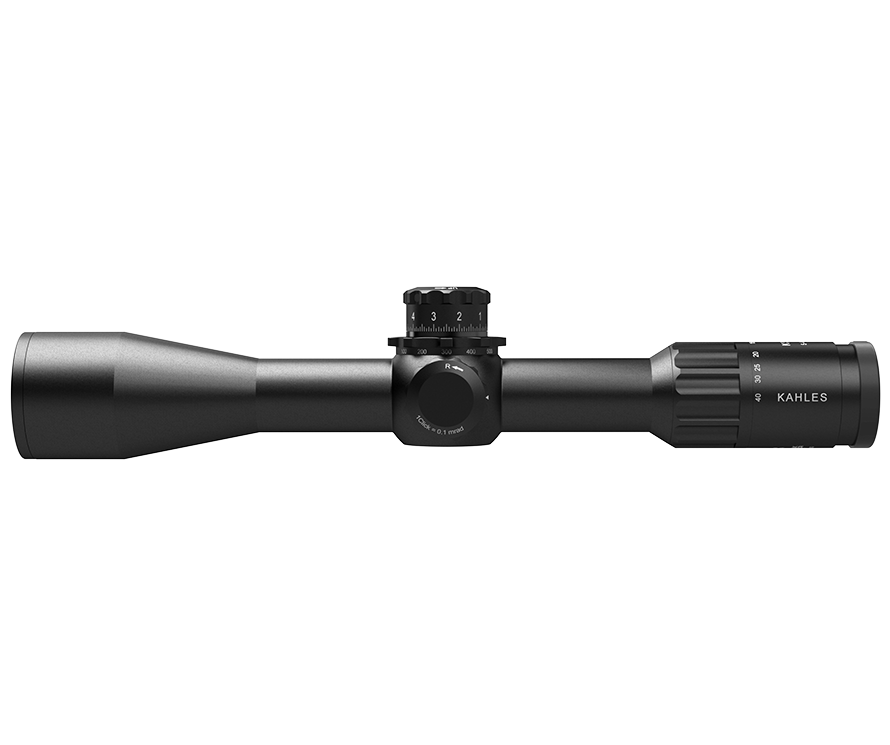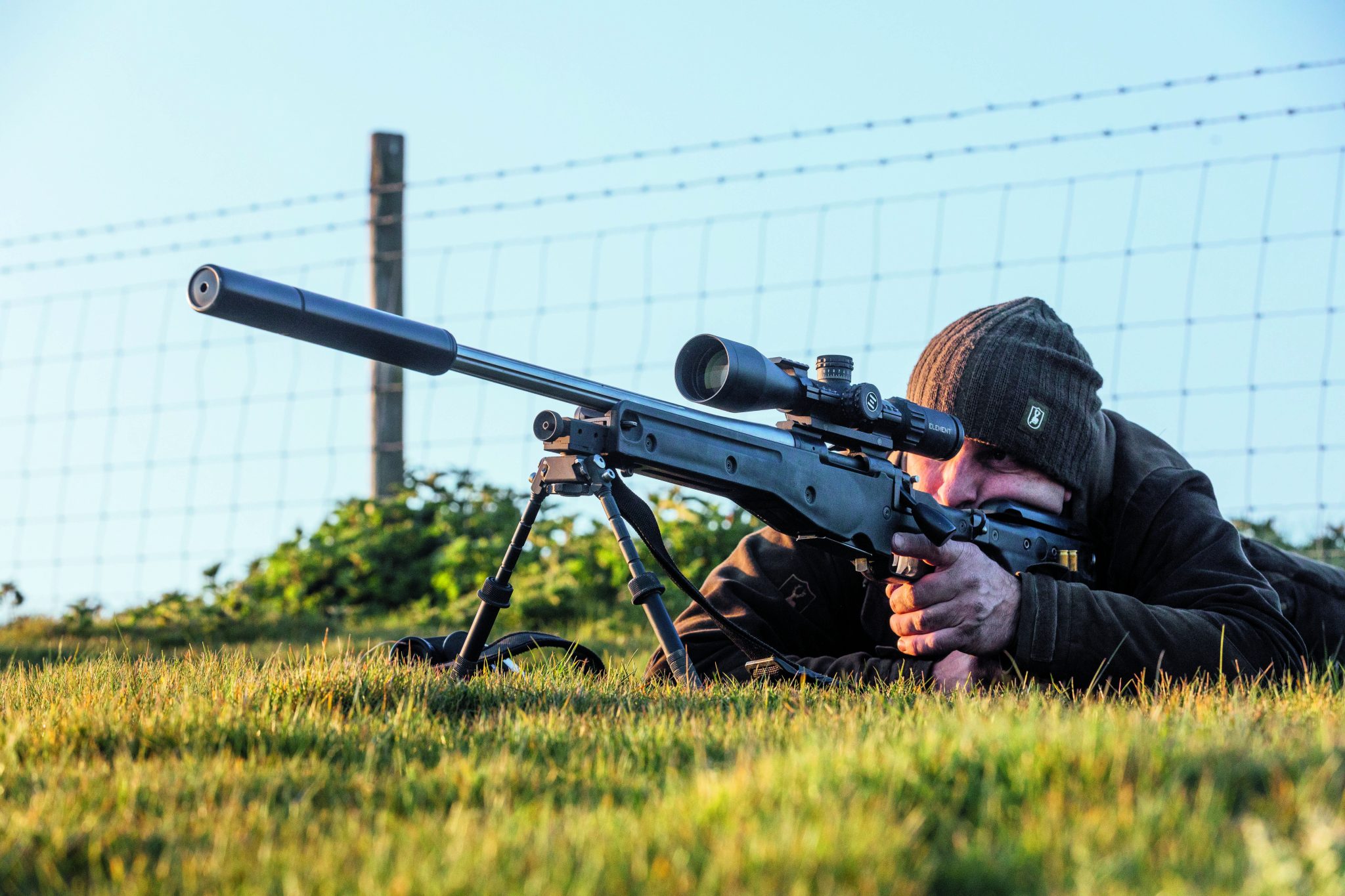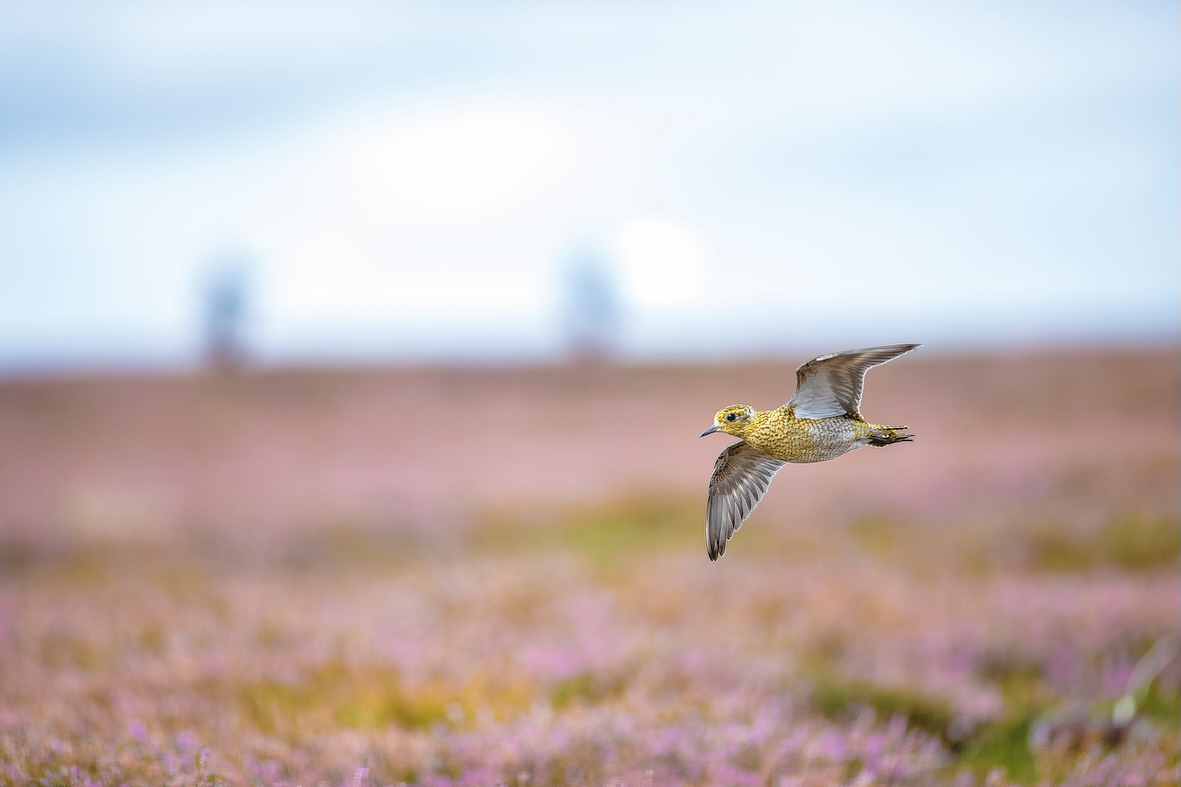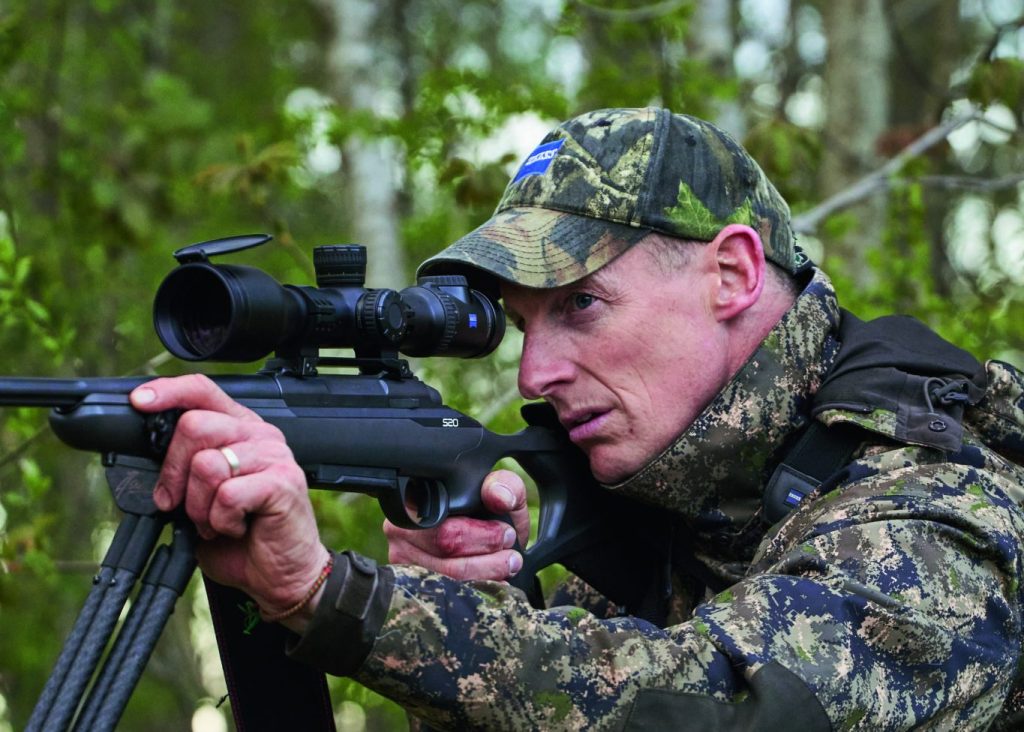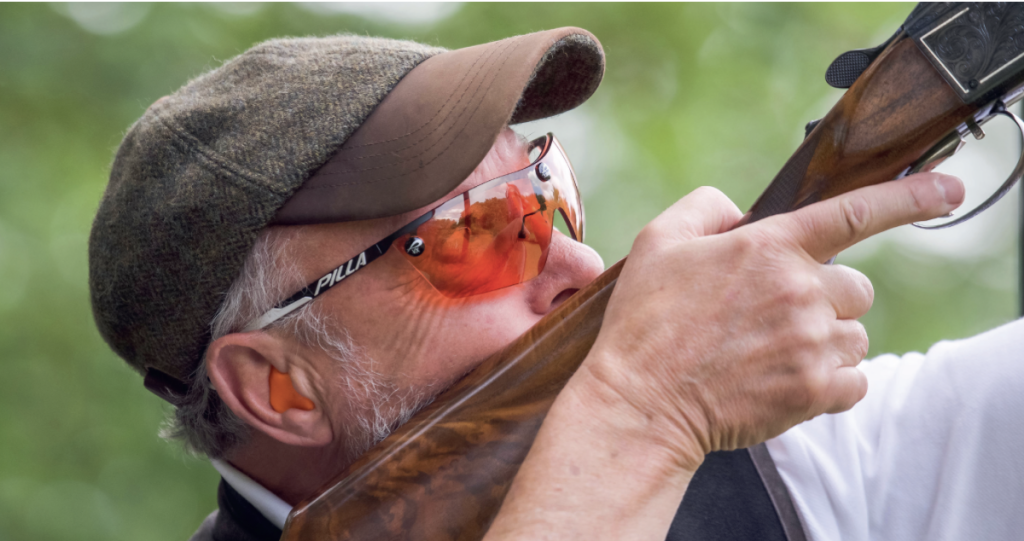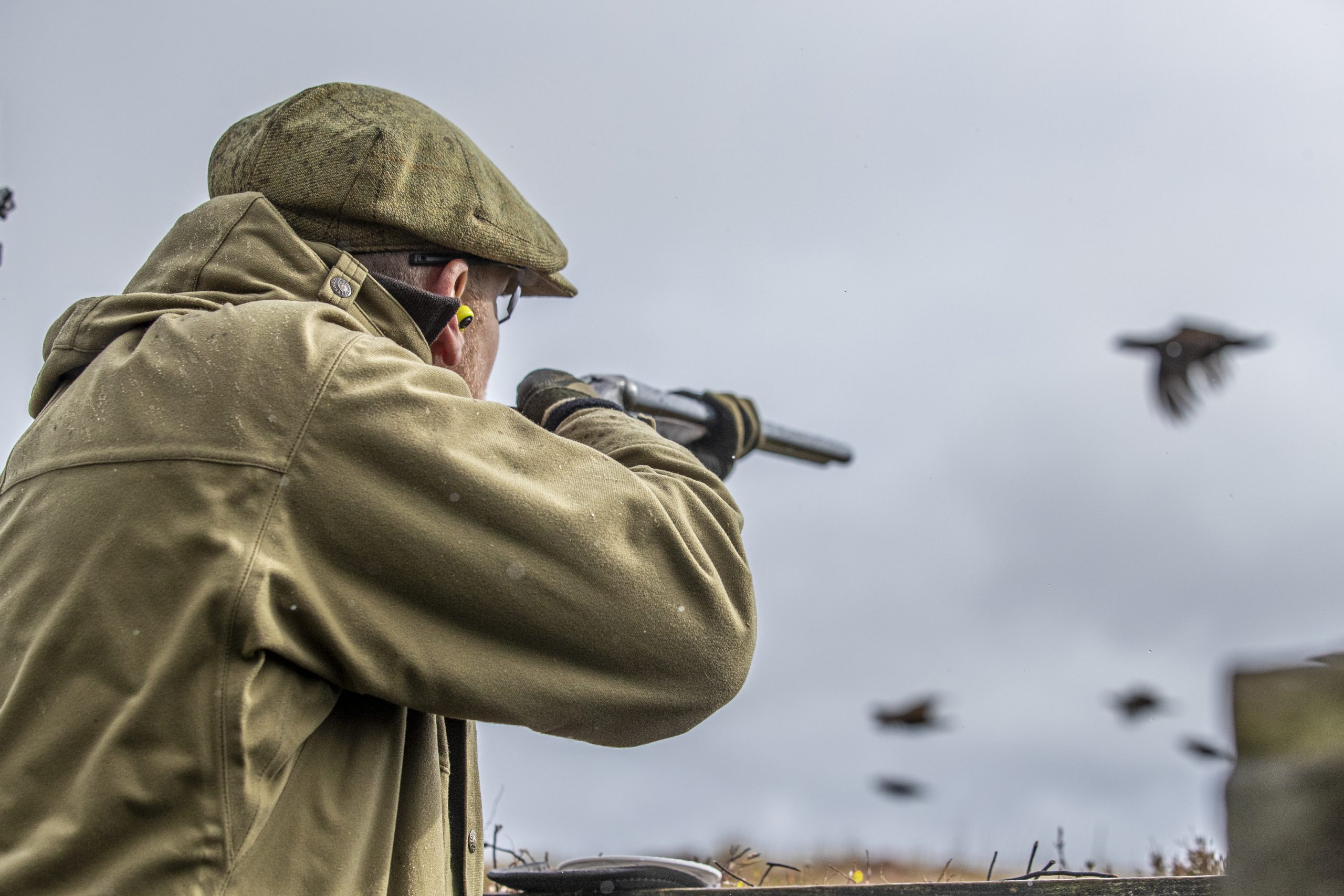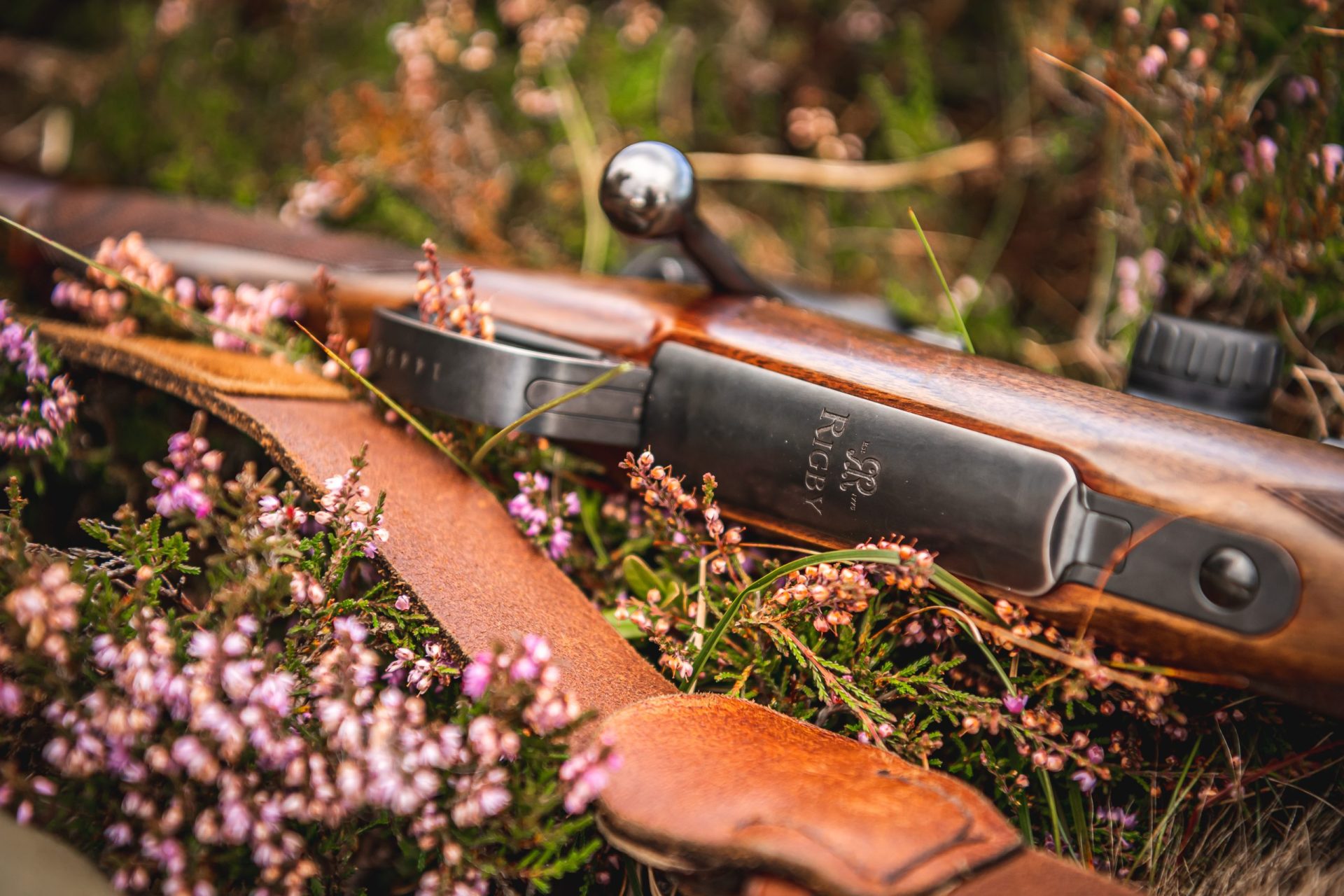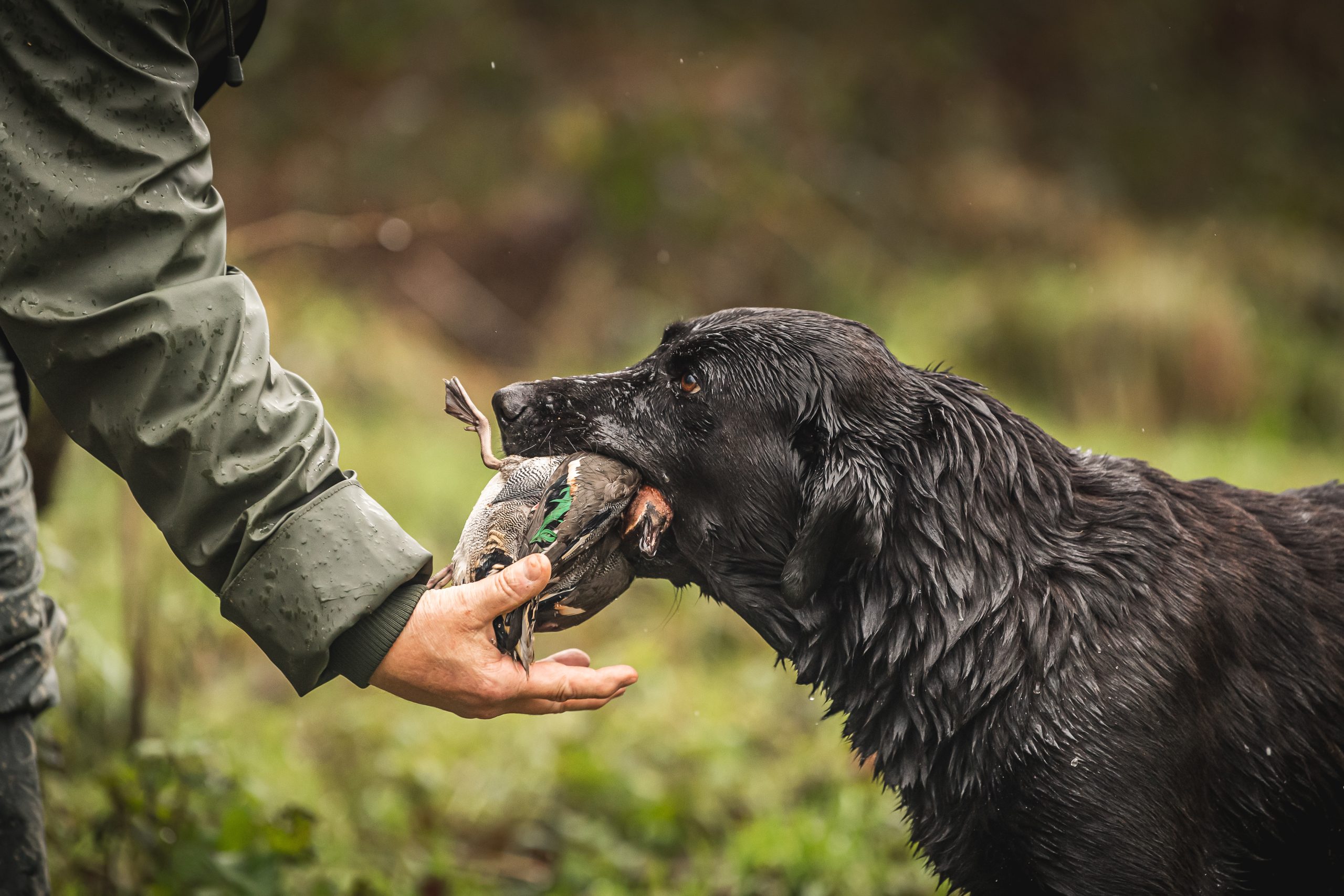Shooting
Outdoor HFT shooting – how to adapt with age
Would you like to speak to our readers? We offer sponsored articles and advertising to put you in front of our audience. Find out more.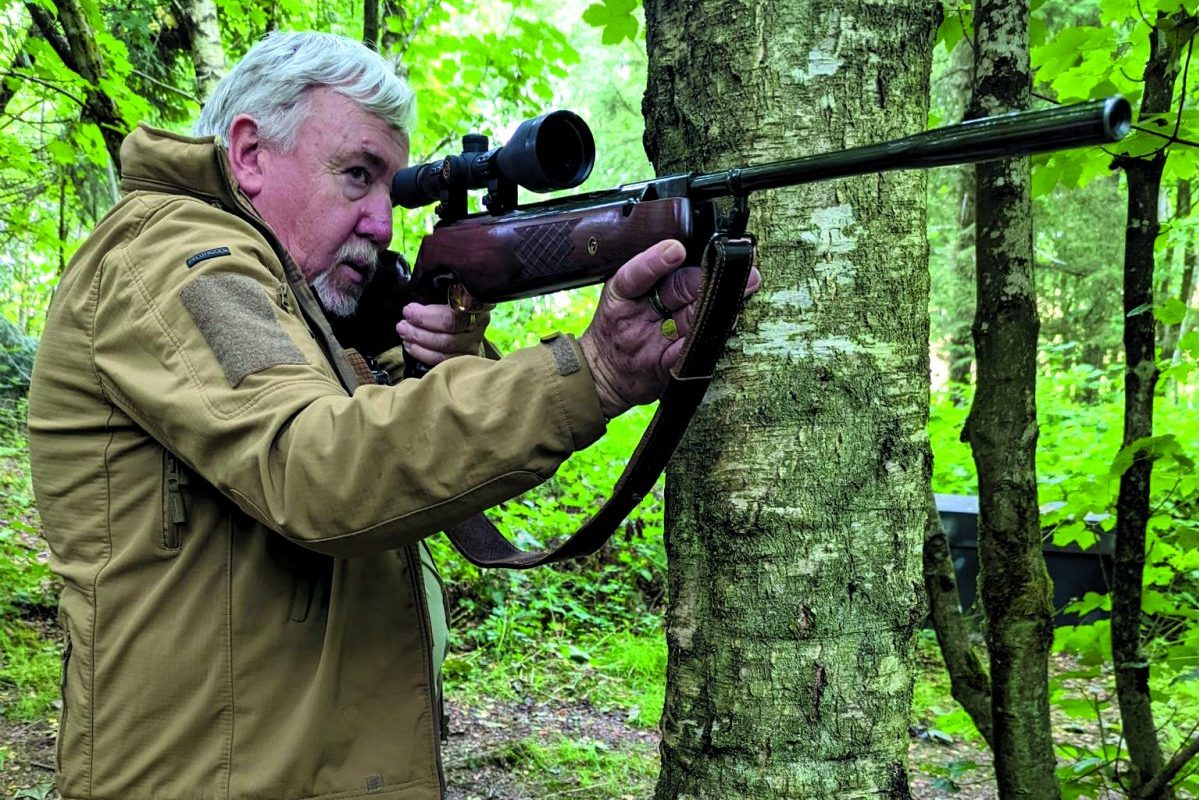
For those of us who have been tied to a bench for most, if not all, of our shooting for prolonged periods, shooting outside will present a considerable challenge.
Regular readers will be aware that for the past few years I have been heavily involved with long-range benchrest competition. With a fixed target at distances varying between 53 and 56 yards, scoring well remains incredibly challenging, with the highest score I have personally witnessed being 240, still 10 points off the possible maximum. Like most forms of competition, our skills will be tested and evaluated at every opportunity as we attempt to outdo both ourselves and of course our fellow competitors.
The same thing applies to those of us choosing to shoot outdoors, either in competition or for sporting purposes in the field. Having not ventured outdoors for several months with a gun, I agreed to attend Fort Airgun Club in North Wales with my son James to blow away the cobwebs and find out if I was still capable of making shooting decisions requiring the skills of accurate range assessment and trying to decide how any breeze would affect those pellets within the wooded environment.
Not wishing to change the formats of any of my target rifles from benchrest to HFT format meant I took along a “non-serious” setup in the shape of my Venom HW80 springer. This gun is like an extension of my body – I know it that well, having owned and shot it regularly since purchasing it new in 2004.
Age begets wisdom
It quickly became apparent that my advancing years and lack of recent practice when getting up and down into the prone position led me to the conclusion that I am definitely now over the hill when it comes to seriously contemplating HFT competition in the future. That is a shame, as I have on occasion done reasonably well in the local Veteran category for HFT competition. Unfortunately, those days are now well and truly over for me.
That does not mean that I do not appreciate the different skill set that is required for a top outdoor shooter to compete, however. Even though I elected to take all my shots from the standing position, I still had to assess the range and the wind, and make a decision regarding holdover or holdunder when placing the crosshairs of my 30/30 reticle upon each individual target.
Having been used to shooting outdoors with much more modern optics that tend to contain all sorts of useful additional aiming marks within the reticle, it was not easy to once again use what was originally purchased back in 2004 as a general purpose hunting scope, the Simmons Whitetail Classic 3-9×50.
Having had the chat with James regarding the difficulty I was having getting into and up from the prone position, he was at least this time willing to accept that his dad is now basically over the hill and will not be attending or competing in serious outdoor competition in the near future.
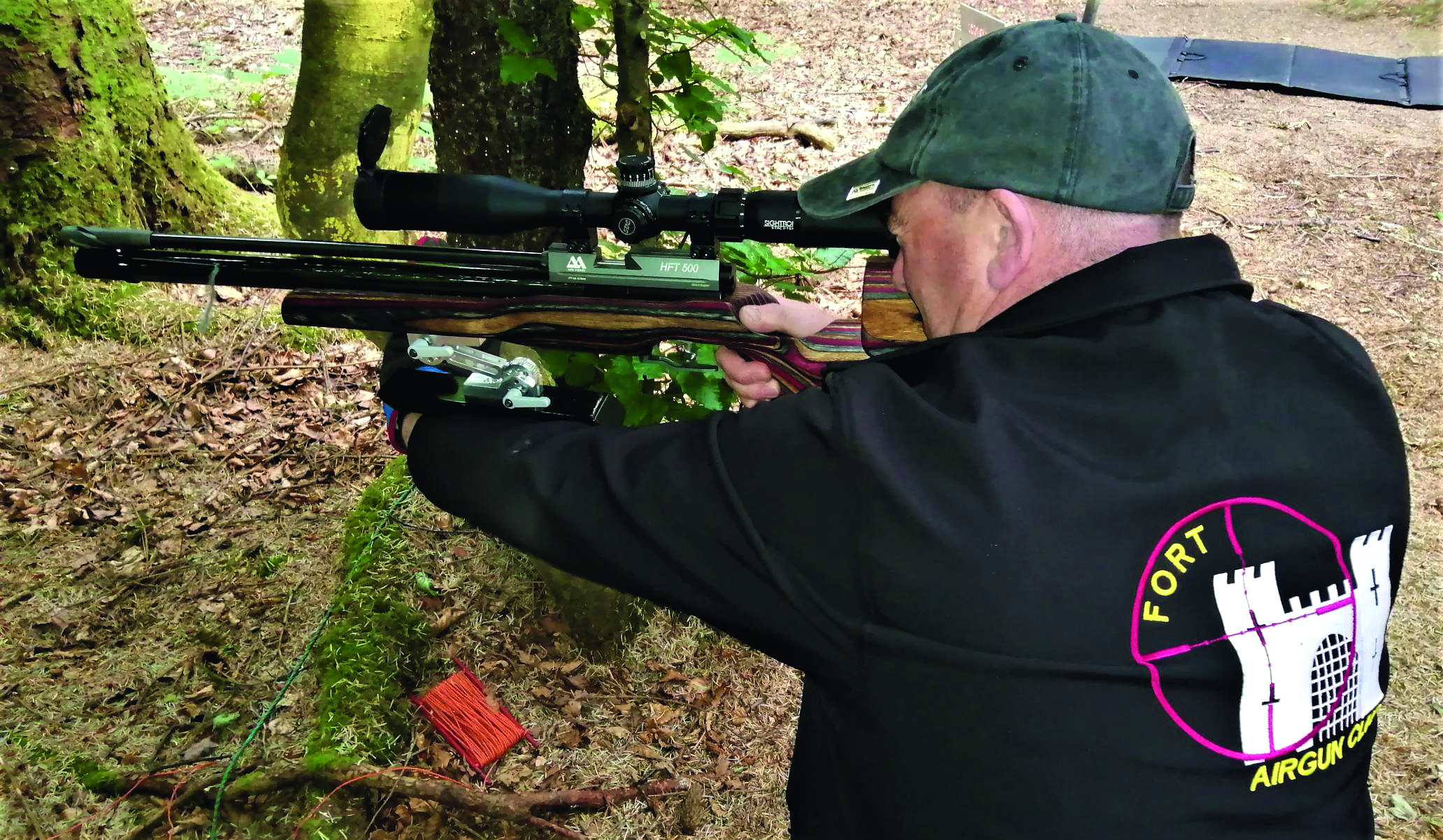
Simon Gibson shoots his HFT 500 at the practice event, which was a chance to brush off the cobwebs ahead of the start of the season
James is not a person to mince his words, even though being a new dad has tempered him very slightly. As we progressed through the course of fire, I was once again reminded how easy experts make things look when we attempt to match their skill set. As I was taking all my shots from the standing, sometimes supported position, James was not particularly interested if I hit or missed the target, and just concentrated on doing his usual thing.
As this was a practice shoot for the club and not part of any regional or local competition format, it was acceptable to have another shot at each individual target if it was missed the first time. As you can imagine, this involved me taking lots of additional shots, with James dropping everything bar the unsupported stander with his first.
I am advised that he is currently performing pretty well in the national UKAHFT competition and is in third or fourth place. Considering his new commitments and the understanding of his partner Jen, it is good that he is still able to shoot most Sundays throughout the year. This will hopefully allow him to continue with his passion for outdoor HFT competition into the future.
The future of shooting
Of course, as any regular shooter that is a club member or part of any shooting competition scene will tell you, just being with your friends helps to relax the mind away from those daily worries that we all seem to collect from time to time.
As we made our way through the course the usual subjects of gun specifications, ammunition consideration, wind direction and weather conditions were discussed as normal. This usually involves a lot of mickey-taking, although not at the remarkably elevated levels perfected by the northwest elf Mr Ian Jones that the current long-range indoor shooting regulars have to put up with.
Said elf nearly killed me with shock last week after fixing a large plastic spider to the inside of one of our club’s cupboards, only for yours truly to open it and retreat, much to the amusement of all present as the spider swung threateningly towards me on its string. Swine.
I had intended to take along with me some of the pellets that I am currently assessing regarding potential suitability for indoor competition.
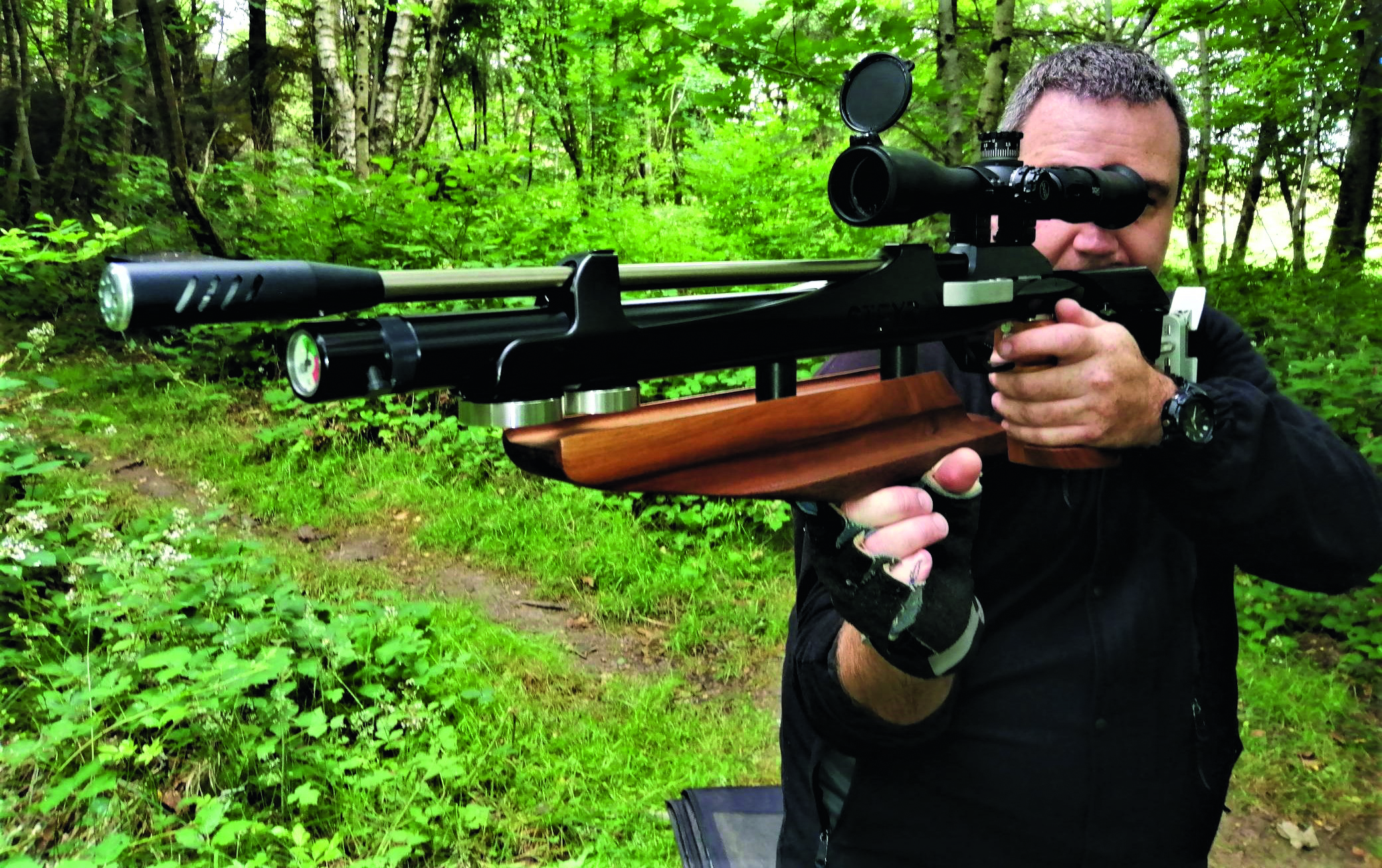
Andy’s son James is young and agile enough to shoot from all the prescribed stances, but age may catch up with him one day!
Many of us are aware that various bodies will be assessing the suitability and use of lead by many within the shooting community, including ourselves. I would urge all readers to check out the relevant website and to leave your comments regarding the use of lead pellets for our sport. All our comments will at least be read and hopefully considered prior to any decisions being made in the near future.
The pellets I am currently testing are the non-lead BSA Green Star. In .177 calibre – these pellets look like they have been individually turned on a lathe and shine when you inspect them closely. More importantly is the way that they have performed for many of us indoors. Several decent shooters have also shot them, with everybody agreeing that they are accurate pellets out to the full 56 yards distance, with a few 25m benchresters managing single-hole groups on their target cards. I must admit that I was genuinely surprised at how good the new ammunition was.
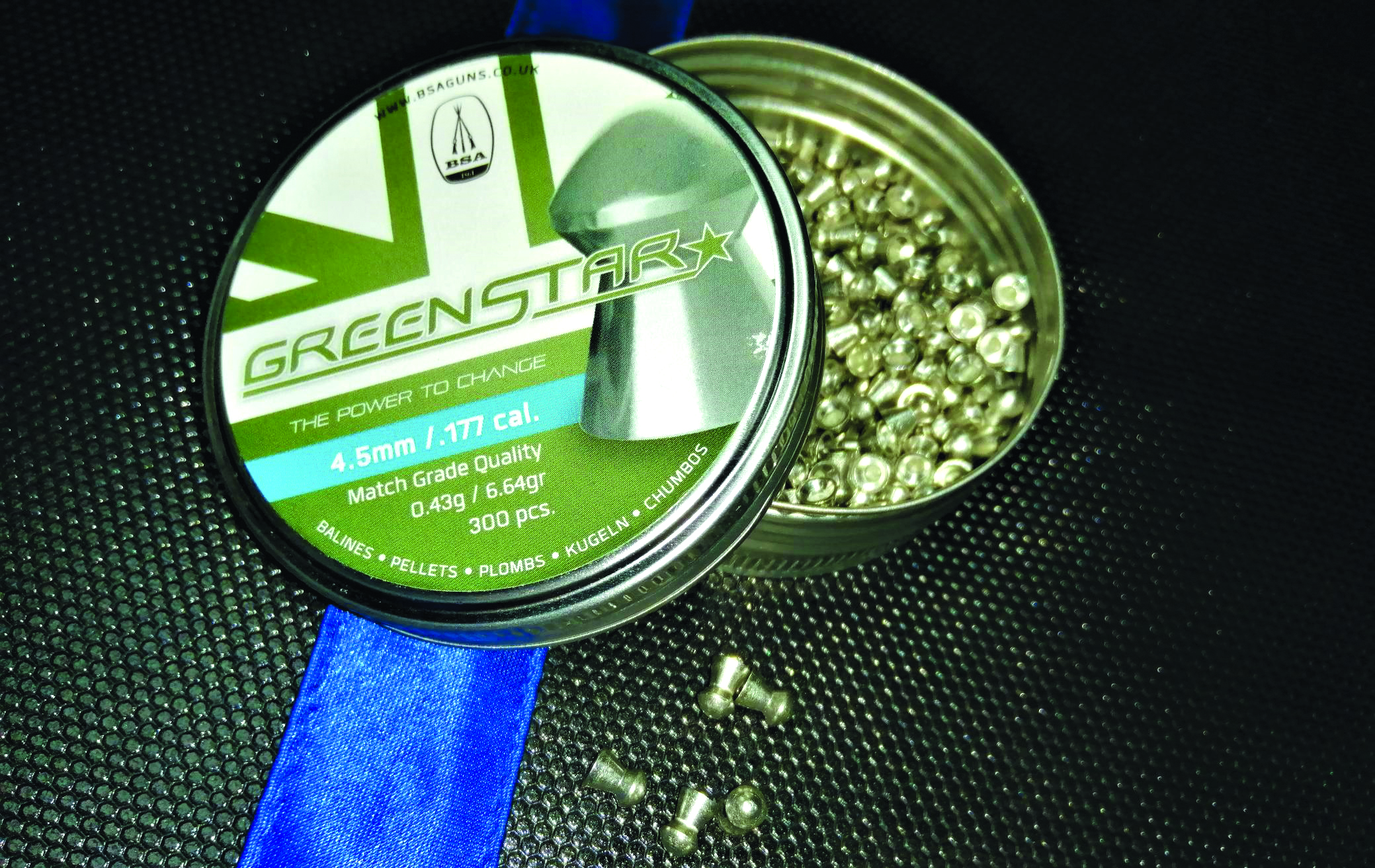
Andy has found the new BSA Green Star pellets shoot well in most barrels indoors, and wants to test them outdoors as well
It is encouraging to think that if the worst was to happen, and our use of lead pellets was no longer acceptable, then at least we have a decent substitute, although they are considerably more expensive than their lead equivalents.
My intention was to take along the Green Stars to see how some decent outdoor shooters progressed with them in the wind. However, I of course forgot to pick them up, so that will have to be tried another time. The pellets are significantly lighter than their lead counterparts, although they do travel faster and therefore have a flatter trajectory.
Hopefully, the industry will continue to develop additional lead-free ammunition alternatives that do not cost a fortune. That will mean that many of us will not have to significantly cut back on our weekly ammunition quota!
Related articles
Shooting
Shotgun
Let’s bite the bullet
The ban on lead shot for all game shooting is moving apace so it’s time to find the best eco-friendly ammunition that suits you and your rifle
By Time Well Spent
Shotgun
Shotgun buying guides
Starting out? Make sure it fits
If you’re buying your first clay gun, the right fit takes precedence – not good looks, the brand your mate’s got or even price – warns Paul Austin
By Time Well Spent
Manage Consent
To provide the best experiences, we use technologies like cookies to store and/or access device information. Consenting to these technologies will allow us to process data such as browsing behavior or unique IDs on this site. Not consenting or withdrawing consent, may adversely affect certain features and functions.
Functional Always active
The technical storage or access is strictly necessary for the legitimate purpose of enabling the use of a specific service explicitly requested by the subscriber or user, or for the sole purpose of carrying out the transmission of a communication over an electronic communications network.
Preferences
The technical storage or access is necessary for the legitimate purpose of storing preferences that are not requested by the subscriber or user.
Statistics
The technical storage or access that is used exclusively for statistical purposes.
The technical storage or access that is used exclusively for anonymous statistical purposes. Without a subpoena, voluntary compliance on the part of your Internet Service Provider, or additional records from a third party, information stored or retrieved for this purpose alone cannot usually be used to identify you.
Marketing
The technical storage or access is required to create user profiles to send advertising, or to track the user on a website or across several websites for similar marketing purposes.

